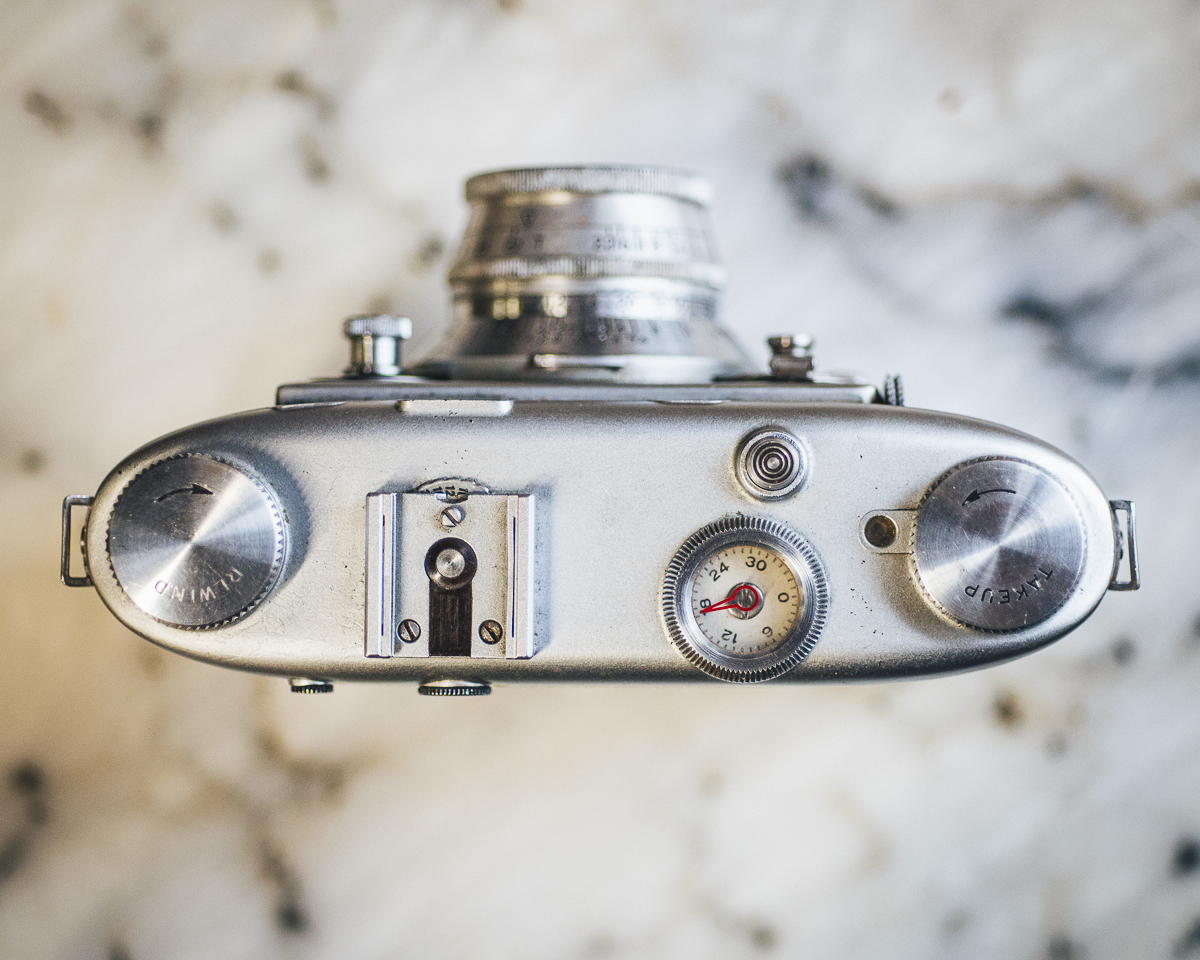 |
| Check out that cool frame counter! |
The Foton's most distinguishing feature is its spring-driven motor drive which, once wound up via a key on the bottom plate, lets the camera fire at six frames per second! If the key is fully wound, you can shoot through an entire roll of 24-exposure film without having to wind at all between frames. It's a thrill to fire the shutter and watch the circular dial-style frame counter spin, spin, spin away! You can set the camera to fire in semi-automatic mode, or flip a switch and make the Foton keep firing until you take your finger off the shutter release. There is also a manual film advance knob on top of the camera, but it is only used during film loading. The shutter is of the focal plane variety, made of metal, and travels vertically. Speeds range from 1 second to 1/1000, plus bulb. I didn't get a chance to shoot any action sequences, but you certainly could with this camera. I'm sure the 6fps winder made the Foton a dream camera for photojournalists and sports photographers back when it originally came out.
 |
| Bottom of the Foton, showing the winding key. |
The Foton came with a standard "2 inch" (about 50mm) f/2 lens, which is actually measured in t-stops on the barrel. Other lenses were manufactured, but are just about impossible to find these days. You can focus the lens by twisting the barrel, or by turning a small dial on the front of the body, similar to on a classic Contax or Nikon. The Foton has separate focusing and framing windows, both of which are pretty small. The rangefinder window on the Foton I used had a bit of haze, which made focusing slower and trickier than it should have been. I also shot almost my entire roll indoors, which didn't help the situation.












































